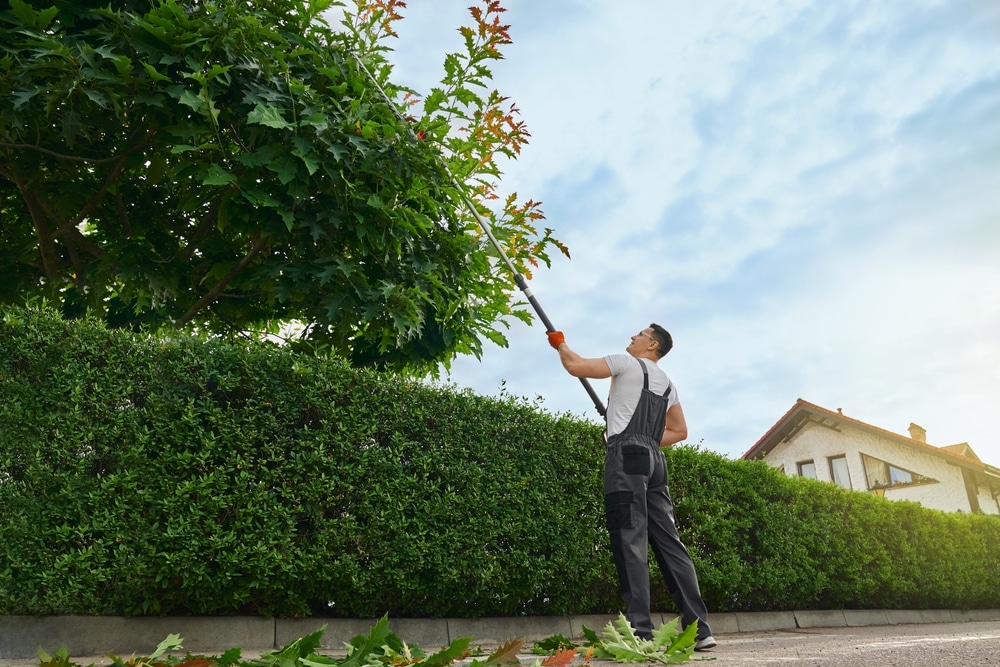Healthy, well-maintained trees are a source of pride and protection for any property. They provide shade, enhance curb appeal, and add value to your home. But without consistent upkeep, even the strongest trees can suffer from storm damage, pest infestations, or hidden diseases. At Acorn Tree Service, we provide professional tree care services in Clearwater, FL, and we’ve created this guide to tree maintenance for homeowners.
By breaking care into monthly routines and seasonal tasks, we make it easier for you to keep your trees thriving while avoiding costly issues like emergency tree removal.
Why Ongoing Tree Care Matters
As tree experts, we’ve seen firsthand how minor issues—such as a cracked limb or spotted leaf—can become serious hazards if ignored. Proactive tree care means fewer risks, healthier growth, and longer tree life. Maintenance is essential for safety and beauty, especially in Florida, where hurricanes and humid summers add stress to trees.
Monthly Tree Maintenance for Homeowners
Every month, take time for quick inspections and light maintenance. These habits keep your trees in peak condition and prepare them for the changing seasons:
- Water wisely: Deep watering once or twice a month (more for young trees) supports healthy roots.
- Check for pests and disease: Look for chew marks, sticky residue, discoloration, or unusual growths.
- Inspect branches: Identify low-hanging, cracked, or dead limbs that may need pruning.
- Clear the base: Remove vines, weeds, and built-up debris to improve air flow around roots.
- Soil check: Test moisture levels and adjust watering during rainy or drought periods.
Seasonal Tree Care Checklist
Each season comes with different challenges, and tree maintenance for homeowners often looks different in spring, summer, fall, and winter. Here’s how homeowners in Florida and beyond can adapt:
Spring Prep
Spring signals new growth—and the perfect time to strengthen trees.
- Inspect winter damage: Look for broken branches, bark cracks, or root disturbances.
- Prune strategically: Remove deadwood and thin crowded branches to improve air circulation. Our tree pruning types guide explains the different pruning methods.
- Fertilize as needed: Balanced nutrients help trees leaf out and flower more fully.
- Preventive treatments: Apply approved pest controls if your area is prone to specific infestations.
Summer Watch
Hot weather, heavy storms, and high humidity can weaken established trees.
- Water consistently: A slow soak at the base prevents shallow root systems.
- Watch the canopy: Yellowing leaves, sudden dieback, or sparse foliage may indicate stress or disease.
- Light pruning only: Remove crossing or rubbing branches, but avoid heavy cuts in peak heat.
- Pest monitoring: Check for borers, scale insects, or fungal leaf spots common in Florida summers.
Fall Cleanup
Autumn is the time to prepare trees for winter and the upcoming storm season.
- Leaf management: Rake and remove piles to prevent fungal growth.
- Shaping cuts: Prune weak or hazardous limbs before storms arrive.
- Deep watering: A final soak before the cooler months helps roots store energy.
- Inspect trunk and roots: Mushrooms, soft spots, or exposed roots can signal deeper issues.
Winter Protection
Florida winters are mild, but occasional cold snaps still pose risks.
- Wrap young trunks: Protect against sunscald or frost cracks.
- Monitor storm impact: Heavy winds and rain can expose weaknesses.
- Prune with care: Winter is often the safest season for larger structural pruning.
- Plan ahead: Schedule evaluations with certified arborists for spring work.
Recommended Tools & Safety Gear
Tree work can be rewarding, but it requires the right equipment and safety measures. Homeowners should keep:
- Hand pruners and loppers for small branches.
- Pole pruner to reach higher limbs without climbing.
- Pruning saw for medium cuts.
- Protective gear: gloves, safety glasses, a hard hat, and sturdy footwear.
- Ladders used cautiously—never overextend, especially near power lines.
Calling a professional is always the safest choice for tall or complex pruning.
Signs of Tree Stress That Require Immediate Attention
Even with the best routine, trees sometimes show red flags that need urgent action:
- Large dead or hanging branches
- Leaning trunks or sudden shifts in position
- Bark peeling, deep cracks, or cavities
- Rapid pest infestations or fungal growth
- Exposed or rotting roots
These are often signs of structural instability or disease and should be evaluated promptly. In many cases, timely care can save the tree. Professional tree removal may be necessary to protect your property and family.
Hurricane Preparedness: A Local Priority
Here in Clearwater, storms are part of life. Hurricane winds can snap branches or topple weakened trees. Seasonal pruning, health inspections, and structural reinforcement are vital to our tree care services. Preparing trees before storm season reduces property damage and helps ensure community safety.
Bringing It All Together: Tree Maintenance for Homeowners
A thoughtful tree maintenance plan for homeowners means more than a pretty yard—it’s about protecting your investment, your property, and your safety. Following monthly checklists and adapting to each season, you can spot problems early, prevent disease, and strengthen your trees against storms.
Acorn Tree Service specializes in keeping trees across Clearwater healthy, resilient, and safe. Whether you need pruning, disease diagnosis, or storm preparation, our certified arborists are here to help.
Contact Acorn Tree Service today to schedule your expert tree care consultation and give your trees the professional attention they deserve.


